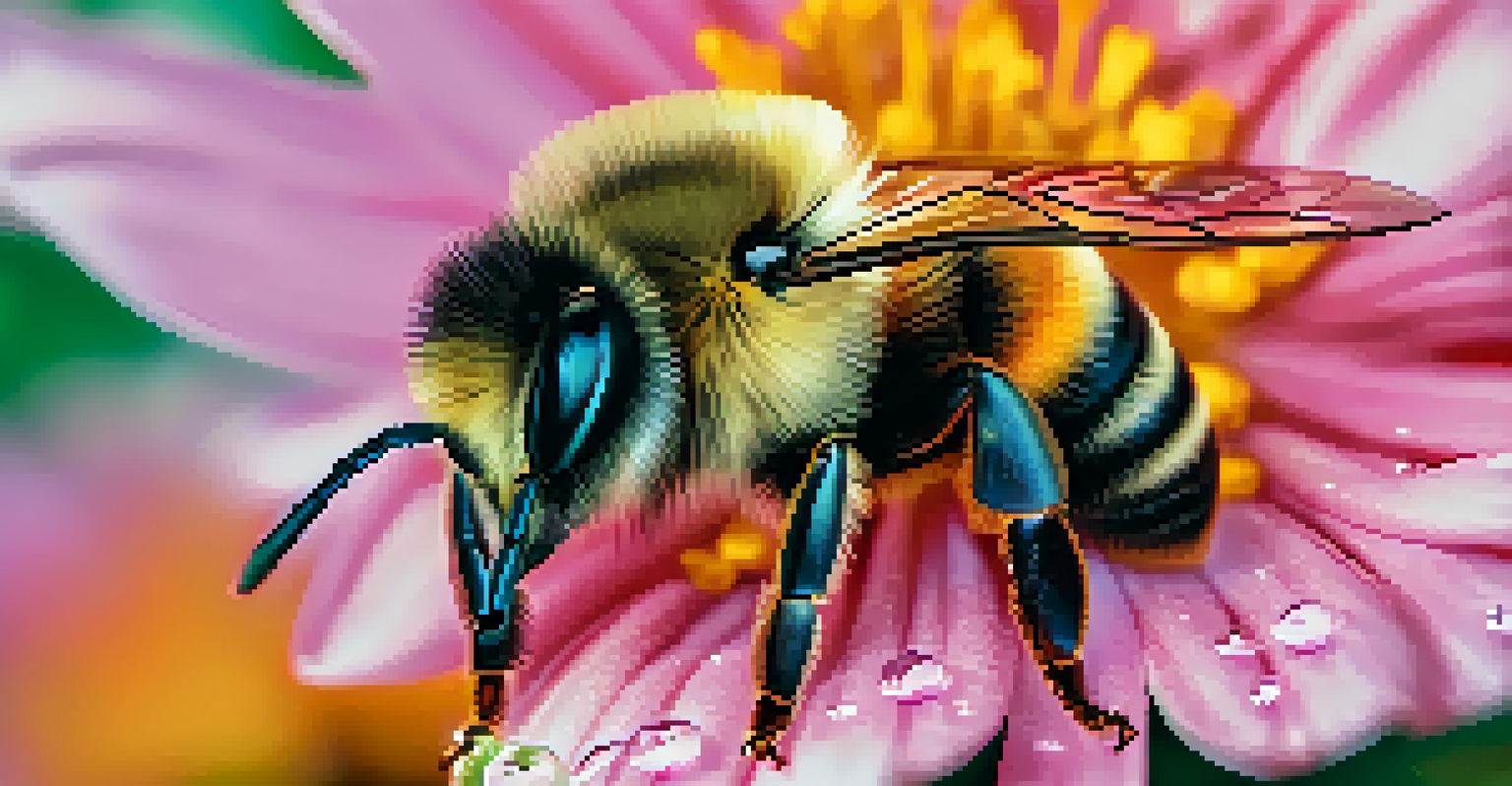The Importance of Flowering Plants in Ecosystems

Flowering Plants: The Backbone of Ecosystems
Flowering plants, or angiosperms, are crucial players in ecosystems. They provide food, shelter, and habitat for countless species, making them essential for maintaining biodiversity. Like the foundation of a house, these plants support numerous life forms that depend on them for survival.
The clearest way into the Universe is through a forest wilderness.
Through photosynthesis, flowering plants convert sunlight into energy, producing oxygen and absorbing carbon dioxide. This process not only sustains the plants themselves but also contributes to the overall health of the atmosphere. Think of them as nature's lungs, continually refreshing the air we breathe.
Moreover, flowering plants serve as a primary food source for herbivores, which in turn support carnivores. The intricate web of life that evolves around these plants illustrates their importance in the food chain, showcasing how interconnected all living beings truly are.
Pollination and Plant Reproduction
One of the most fascinating roles of flowering plants is their involvement in pollination. Many plants rely on animals like bees, butterflies, and birds to transfer pollen, which is vital for reproduction. This relationship highlights a beautiful example of mutualism, where both plants and pollinators benefit.

When pollinators visit flowers, they collect nectar and pollen, which they use for food. In the process, they inadvertently transport pollen from one flower to another, enabling fertilization. This not only allows plants to reproduce but also fosters genetic diversity, ensuring the resilience of plant populations.
Flowering Plants Support Biodiversity
Flowering plants provide essential food and habitat for various species, maintaining the delicate balance of ecosystems.
Without these pollinators, many flowering plants would struggle to reproduce, leading to a decline in their populations. This decline could ripple through the ecosystem, affecting everything from food availability for herbivores to habitats for various species.
Supporting Wildlife and Biodiversity
Flowering plants are vital habitats for a range of wildlife, from insects to mammals. They provide food, nesting sites, and shelter, contributing to the overall health of ecosystems. Imagine a vibrant garden filled with flowers; it attracts not just bees but birds, butterflies, and even small mammals, creating a bustling community.
Nature does not hurry, yet everything is accomplished.
Furthermore, these plants play a critical role in maintaining biodiversity. By supporting various species, flowering plants help create a balanced ecosystem, which is crucial for its stability. A diverse ecosystem is better equipped to withstand environmental changes and challenges.
In contrast, a decline in flowering plants often leads to diminished wildlife populations and reduced ecosystem health. This highlights the importance of conserving flowering plant species and their habitats to protect the intricate web of life that depends on them.
Soil Health and Erosion Control
Flowering plants contribute significantly to soil health and erosion control. Their roots help bind the soil together, reducing erosion caused by wind and water. Think of them as nature's anchors, holding the earth in place and preventing valuable topsoil from being washed away.
Additionally, when flowering plants decompose, they enrich the soil with organic matter, promoting nutrient cycling. This process is essential for maintaining soil fertility, which directly impacts agricultural productivity and natural ecosystems. Healthy soil leads to healthier plants, creating a positive feedback loop.
Vital for Climate Regulation
Through carbon sequestration and oxygen production, flowering plants play a crucial role in mitigating climate change.
In areas prone to erosion, planting flowering plants can be an effective strategy to stabilize the land. This not only protects the soil but also enhances the overall health of the ecosystem, showcasing the multifaceted benefits of these vital plants.
Climate Regulation and Carbon Sequestration
Flowering plants play a significant role in climate regulation through carbon sequestration. By absorbing carbon dioxide during photosynthesis, they help mitigate the effects of climate change. Picture a lush forest filled with flowering trees; each one is working tirelessly to clean the air and combat global warming.
Not only do flowering plants absorb carbon dioxide, but they also release oxygen, which is crucial for most life forms on Earth. This natural process helps maintain atmospheric balance, making flowering plants essential allies in our fight against climate change.
Moreover, diverse plant communities can better adapt to climate fluctuations, promoting ecosystem resilience. Conserving and restoring flowering plant populations is thus vital for both environmental stability and our future.
Cultural and Economic Significance
Beyond their ecological benefits, flowering plants hold immense cultural and economic value. They are often symbols of beauty and love, featuring prominently in art, literature, and traditions worldwide. From weddings to funerals, flowers mark significant life events, connecting people across cultures.
Economically, flowering plants contribute to industries such as agriculture, horticulture, and tourism. For instance, the cultivation of flowering crops like fruits and vegetables supports local economies and provides food security. Think of farmers' markets brimming with colorful produce, all thanks to these essential plants.
Cultural and Economic Importance
Flowering plants hold significant cultural value and contribute to economies through agriculture, horticulture, and ecotourism.
Furthermore, ecotourism often focuses on regions rich in flowering plant diversity, attracting visitors eager to experience nature's beauty. This highlights how flowering plants can foster economic growth while promoting conservation efforts.
Conservation Efforts for Flowering Plants
Given their importance, conservation efforts for flowering plants are critical. Habitat loss, pollution, and climate change threaten many species, making it essential to protect and restore their environments. Just as we protect endangered animals, we must also prioritize the preservation of flowering plants.
Community involvement plays a vital role in conservation initiatives. By educating the public about the importance of flowering plants, we can foster a greater appreciation for biodiversity. Simple actions, like planting native flowers in gardens or supporting local conservation groups, can make a significant difference.

Collaboration between governments, organizations, and individuals is crucial for successful conservation efforts. Together, we can create policies and programs that protect flowering plants and ensure their survival for future generations.